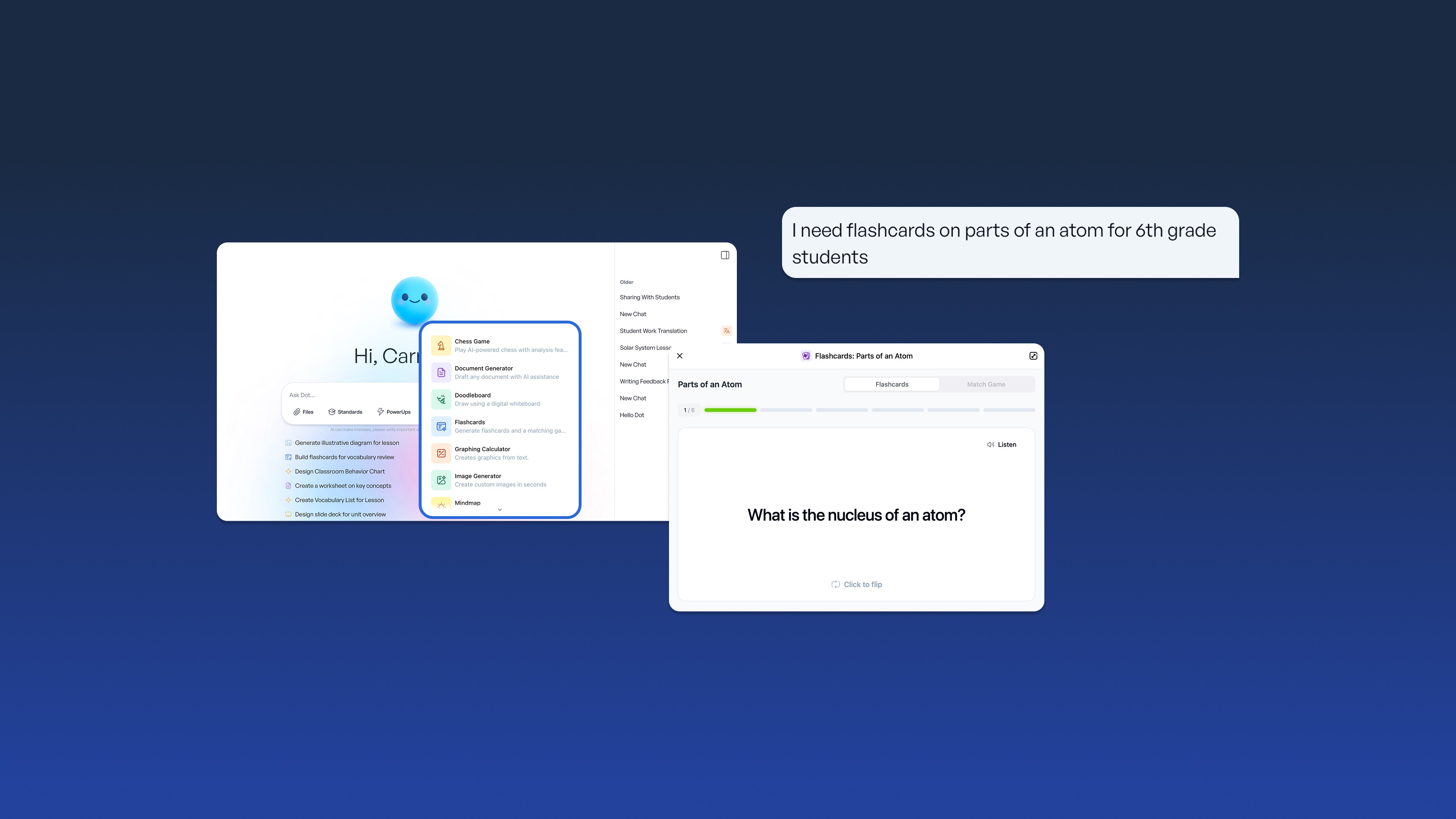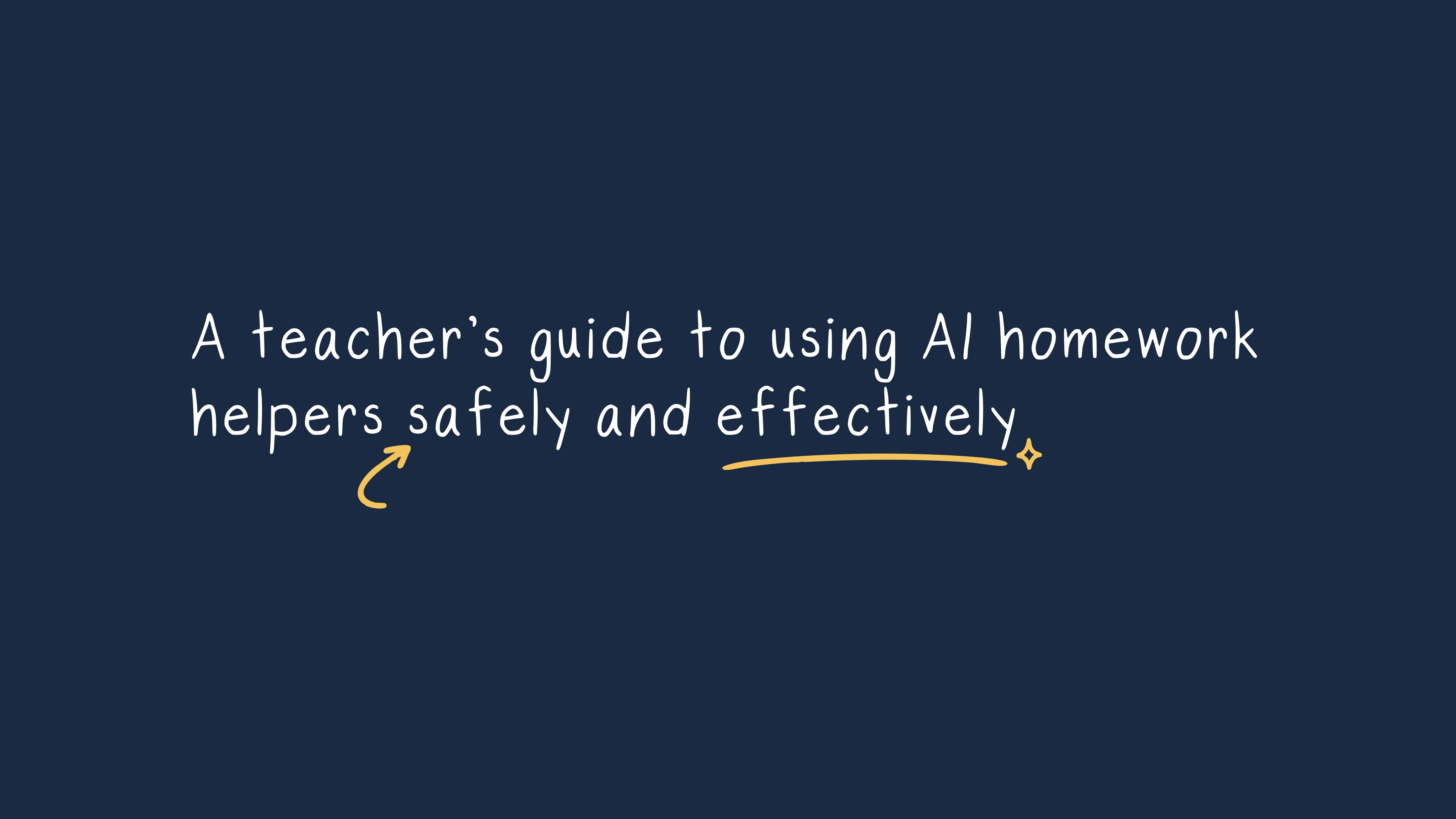Nikki Muncey
May 5, 2025
Get started
SchoolAI is free for teachers
Key takeaways
AI-powered learning tools create personalized educational experiences that adapt to how students with ADHD actually learn, rather than forcing them to conform to traditional education methods.
Students with ADHD face challenges with focus, organization, and executive functioning that impact their academic performance despite many possessing above-average intelligence.
Adaptive AI platforms adjust content difficulty in real-time, provide immediate feedback, and pace learning to prevent both overwhelm and boredom in students with ADHD.
AI organizational tools help students with ADHD manage assignments by splitting projects into manageable chunks, sending deadline reminders, and prioritizing tasks based on importance.
Implementing AI for ADHD support requires addressing challenges such as the digital divide, privacy concerns, interface design, and striking a healthy balance between technological assistance and skill development.
Trying to focus in a classroom when your brain constantly pulls your attention in a dozen different directions can be a nightmare. And for millions of students with ADHD worldwide, this isn't something they can wake up from—it's a daily reality.
The statistics are striking: 11.4% of children in the US aged 3-17 have been diagnosed with ADHD, and many struggle with maintaining focus, completing assignments, and organizing their work effectively. Traditional classrooms weren't designed with these diverse thinking patterns in mind, often leaving bright, capable students frustrated and underperforming.
In this context, AI-powered learning tools are creating personalized educational experiences that adapt to how ADHD students actually learn, not how traditional education expects them to. In this article, we'll explore how AI is transforming education for students with ADHD, examining specific tools, implementation strategies, and the exciting possibilities this technology unlocks.
Understanding ADHD in education
Attention-Deficit/Hyperactivity Disorder creates unique challenges in the classroom. This neurodevelopmental condition manifests through three core symptoms—inattention, hyperactivity, and impulsivity—each of which significantly impacts how students learn and perform.
Students with ADHD often struggle with sustaining focus, following instructions, completing assignments, organizing materials, and managing time effectively. These challenges stem from differences in executive functioning skills, which are crucial for academic success. Executive functions include planning, prioritizing, and problem-solving, all of which can be affected in individuals with ADHD.
The impact of ADHD on learning can be profound:
Students may miss important information during lessons, which can create knowledge gaps.
Restlessness and excessive fidgeting can disrupt not only their own learning but also that of their peers.
Impulsivity might lead to rushed assignments or blurted answers, while organization challenges result in missed deadlines and forgotten homework.
These combined challenges often lead to poor academic performance and diminished self-confidence, despite many ADHD students possessing above-average intelligence and creativity. However, with proper support and accommodations, these students can thrive. Tailored learning environments and differentiated instruction offer significant benefits, and this is precisely where AI can make a transformative difference.
The role of AI in supporting ADHD students
Artificial intelligence is revolutionizing education for students with ADHD by creating responsive and personalized learning experiences that traditional methods can't match.
AI technologies in education include AI assessment tools, machine learning algorithms that analyze performance patterns, adaptive platforms that adjust content difficulty in real-time, and natural language processing for improved feedback. These tools create student-centered learning environments that flex around the student rather than forcing students to adapt to rigid systems.
The benefits for students with ADHD are substantial.
AI enables true personalization, analyzing individual learning patterns to create customized paths that maintain engagement.
Real-time feedback helps students stay on track without waiting for teacher evaluation.
Adaptive pacing prevents both overwhelm and boredom by adjusting content delivery based on current focus and comprehension levels.
Perhaps most importantly, AI tools address executive function challenges through enhanced organization features and improved focus. For instance, some applications use attention-tracking technology to provide timely prompts or suggest breaks when concentration starts to wane.
Research highlighted by Predictive UX shows that AI-powered personalized learning experiences can significantly improve academic outcomes for students with ADHD, making this technology not just helpful but potentially transformative.
AI tools for ADHD students
Let's explore some practical AI tools that are making a real difference for students with ADHD.
Adaptive learning platforms
AI-powered adaptive platforms adjust to each student's unique needs in real-time. They can then deliver content at the optimal difficulty level, acting as a study companion that knows exactly what a student needs next. Additionally, AI enables personalized tutoring that adapts to individual learning preferences, providing one-on-one support that can significantly benefit students with ADHD.
SchoolAI’s immersive learning platform is an ideal learning aid. It offers immersive environments (called Spaces) that allow students to interact with curriculum in a more personalized and engaging way. A history lesson, for instance, becomes an engaging walk through ancient Rome, capturing attention in ways traditional methods can't match.
AI-powered organizational tools
Keeping track of assignments and deadlines is particularly challenging for students with ADHD. AI organizational tools function like supportive assistants, breaking down large projects into manageable chunks, sending timely reminders about upcoming deadlines, suggesting appropriate break times, and prioritizing tasks based on importance.
Real-time feedback and analytics
AI provides immediate feedback that helps ADHD students correct course before frustration sets in. This instant response loop maintains engagement and builds confidence through consistent small successes. AI tools also enable educators to provide detailed student feedback more efficiently, helping students understand their progress and areas for improvement.
For educators, AI analytics reveal exactly where and how each student struggles. Implementing AI in student assessments allows for more accurate tracking of progress and tailoring instruction to meet students' individual needs. Implementing AI for ADHD support in classrooms
Effectively integrating AI tools requires a thoughtful approach. Here's a streamlined action plan:
Assess needs: Identify specific areas where students with ADHD struggle the most in your classroom.
Select appropriate tools: Choose AI technologies that address those specific challenges, prioritizing intuitive interfaces and customizable features.
Prepare infrastructure: Ensure your classroom has the necessary hardware, connectivity, and privacy protections in place.
Train educators: Provide comprehensive AI training for teachers on how to use and integrate AI tools into lesson plans effectively.
Introduce tools gradually: Start with one or two tools, allowing students time to adapt before introducing others.
Create personalized plans: Use AI-generated insights to develop individualized learning approaches for each ADHD student.
Monitor and adjust: Regularly review effectiveness and make necessary adjustments based on student progress and feedback.
Foster communication: Maintain open dialogue between teachers, students, and parents about the use and effectiveness of AI tools.
Important considerations for AI interventions for students with ADHD
While promising, AI implementation comes with important considerations.
The digital divide means many schools, especially in lower-income areas, lack the necessary technology infrastructure. Even when available, many AI interfaces weren't designed with people with ADHD in mind.
Privacy concerns about extensive data collection on vulnerable students must be addressed thoughtfully. Additionally, algorithmic bias can be problematic, as most AI systems weren't trained on diverse neurodivergent datasets.
Dependency balance matters too—ADHD students who rely heavily on AI tools might not develop critical executive function skills they'll need later in life.
Addressing these considerations requires directing resources to underserved schools, advocating for ADHD-friendly interfaces, establishing transparent data policies, including neurodiverse voices in AI development, and creating cultures where learning supports are normalized, not stigmatized.
Supporting ADHD students with AI
AI is transforming education for students with ADHD by creating responsive learning environments that adapt to individual needs rather than forcing students to conform to rigid systems. From personalized content delivery to organizational assistance, these tools address the specific challenges ADHD students face while building on their unique strengths.
The potential impact is profound—AI can help create classrooms where neurodiversity is embraced and ADHD is no longer a barrier to academic achievement. By making these technologies accessible to all students, we can move toward truly inclusive education that helps every student reach their full potential, regardless of how their brain is wired.
Ready to see how AI can transform learning for your ADHD students? Visit SchoolAI today to explore our adaptive platform designed specifically to support diverse learning needs and create more equitable educational experiences for all students.
Transform your teaching with AI-powered tools for personalized learning
Always free for teachers.
Recent posts
REFRESH: AI adoption challenges in schools: How to prepare staff and infrastructure
Jennifer Grimes
—
Dec 19, 2025
REFRESH: AI integration: Adding AI tools into your school’s existing technology
Stephanie Howell
—
Dec 19, 2025
Create lesson plans that work: Strategic planning for teachers
Cheska Robinson
—
Dec 18, 2025
A teacher’s guide to using AI homework helpers safely and effectively
Heidi Morton
—
Dec 18, 2025





